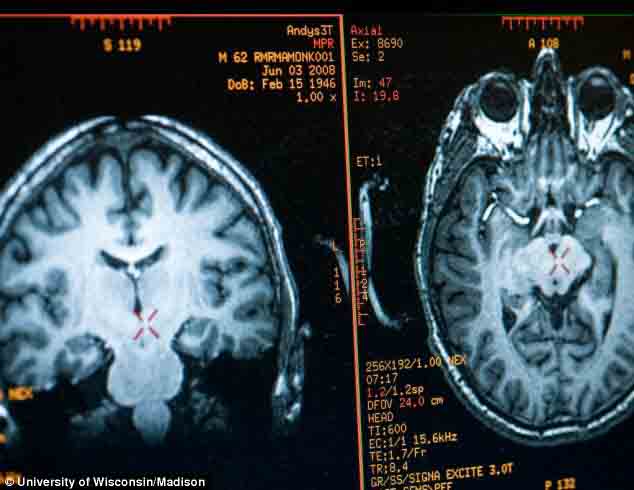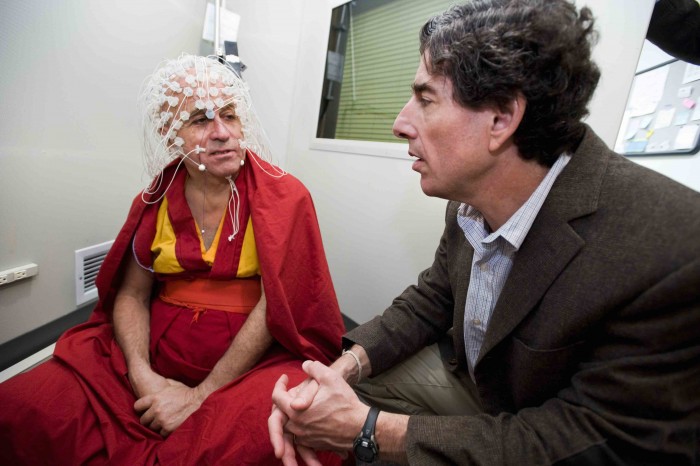How meditation eased my anxiety
Audrey Carleton

I’ve grappled with bouts of anxiety and obsessive negative thinking for years now, without realizing what a negative space they took up in my life. As a mechanism to enforce deadline-induced productivity, I frequently overcommit to far more extracurricular activities than I should. I often joke that I thrive academically in an environment in which I constantly feel under pressure—even panicked—and this was never more true than last semester. This pressure, however, reared its ugly head as I watched my anxiety wear away at my relationships with others, my schoolwork, and myself. A few panic attacks later, I had the realization that I needed to make my mental health a priority, and the first step to doing so was to establish good habits and routines. In addition to exercising and getting more sleep, I resolved to try meditation, something I’d never done before. Not knowing a better place to start, I turned to the app store on my iPhone and downloaded a mindfulness meditation app called Calm. Complete with a meditation timer, soothing noises, and recorded guided meditations, this app made sitting down to meditate for several minutes every evening before bed feel less daunting.
Fear of challenge and failure has kept me from meditating in the past. While I’ve always known in theory that meditating eased anxiety, the idea of intentionally doing nothing for several minutes a day seemed like a waste, and clearing my mind entirely seemed impossible. As I expected, my first few sessions were frustrating. As the guided meditations I was using steered my thoughts toward a single place—the movement of my breath in and out of my body—I struggled to keep my focus there for more than a few seconds. Feeling frustrated by my inability to let go, I was reminded of my own obsessive thinking that brought me to meditation in the first place. Committed to keeping the habit, however, I continued to sit each night for three to five minutes, and with time, I grew calmer, realizing a drifting mind is not only normal, but expected in meditation. Under the instruction of a guided meditation recording, I grew stronger at calmly and non-judgmentally bringing my focus back to the movement of my breath when my thoughts wandered.
One night, I experienced what I’ve only ever heard described as a breakthrough—I was able to maintain a clear head for more than a few seconds while meditating. In that moment, I lost awareness of my surroundings and felt distanced from whatever source of anxiety had occupied my thoughts that day. From there, meditation grew easier and easier.
I didn’t truly see the impact of meditating in other aspects of my life until a few days later. Sitting on the sixth floor of McLennan, writing myself a to-do list for that day, I felt strangely calm and accepting of the list of tasks I had to complete. Several months before this point, the thought of working through an overwhelming to-do list would have worked me into a panicked frenzy. That day, I was able to recognize objectively that I had a lot to do, but that I would eventually complete everything painlessly. Astounded at the sense of calm I felt in the moment, I realized it was likely the regular meditation that had helped me alleviate the ongoing mild feelings of dread that are characteristic of anxiety disorders.
By testing my ability to let go of all thought—good and bad—meditation has taught me how to substitute negative or anxious thinking in daily life for productive thinking and focus on tasks at hand. While this is certainly no cure-all for anxiety, nor a suitable replacement for traditional therapy or medication for diagnosed anxiety disorders, I would highly recommend taking on the practice of meditation to anyone who, like me, often feels panicked by daily life.
For those starting off, I recommend Calm’s “Seven Days of Calm” challenge, or Headspace’s “Take Ten” program to ease users into the basics of meditation while building habit. Ensō and Samsara Lite are simple and user-friendly meditation timers for those seeking the freedom of meditating without guidance. Take and Break! and Smiling Mind were designed for those meditating with the intent of calming depression, anxiety, and stress, as I was.
The science behind meditation
Stephanie Fehertoi

Originating in Buddhist traditions, mindfulness meditation is defined as paying attention to one’s experience including thoughts, sensations, and emotions without judgment and in the present moment. It focuses on training attention to disengage from undesirable patterns of behaviour and cognition, and this meta-awareness is a main goal of meditation. Most practices aim to improve concentration and executive efficiency, achieve existential insight and clear-thinking, and promote psychological well-being. In fact, scientific findings suggest that meditative practitioners do reap benefits, in addition to an aura of calm.
According to the Raz Lab at McGill University, led by Psychiatry Professor Amir Raz, scientists generally classify meditation practices into two categories: Focused attention and open monitoring—though most techniques lie on a spectrum between the two. This involves sustained narrowing of attention on an experiential object, such as the breath or a mantra., whereas open monitoring involves a widening of attention to include the whole field of present-moment experience.
Scientists have discovered that meditation achieves clearer thinking and better concentration by generating different brainwave patterns, or neural connections, that alter the brain’s behaviour. One illustration of this is meditation’s ability to reduce anxiety and even depression. Anxiety decreases with mindfulness meditation because the practice weakens neural circuits that link upsetting sensations to the medial prefrontal cortex, or the self-referencing part of the brain that processes much of our “me” thoughts and emotions. By learning to circumvent this pathway, the lateral prefrontal cortex receives stimuli less intensely and responds more rationally. Because of this, it becomes easier for the mind to be aware of sensations, accept them, and let them pass without igniting fear or anxiety.
With daily practice, the mind can also learn not to get stuck in negative thought patterns, which is central to mindfulness-based cognitive therapy (MBCT), an alternative meditation treatment to help those suffering from depression.
This attention training is one research area of the Raz Lab. Their work suggests that meditation cultivates the ability to disengage, re-orient, and sustain attention, thereby improving the flexibility, sensitivity, and stability of awareness. Developing meta-awareness is crucial for honing focus and cognitive control, and the practice does appear to alter habits of spontaneous mind-wandering or over-thinking, as well as involuntary reactivity in response to strong emotions and pain. It has even been found to foster structural neuroplasticity in the brain, such as enhanced gray matter volume and connectivity between brain regions.
For instance, a study from the University of Wisconsin found that while normal participants would experience an “attentional blink,” or failure to detect a second stimulus that occurs quickly after the first, meditators responded more rapidly and easily to the concurrent stimuli. Electroencephalography (EEG) scans of their brains also revealed deeper rather than superficial information processing of the stimuli within brain areas. Working memory capacity and test performance, for example in reading comprehension on the GREs, also seemed to benefit from mindfulness meditation practice as it fostered better concentration levels, according to researchers from UC Santa Barbara. This increased focus might be due to the fact that long-term meditation practitioners of various types demonstrated reduced activation in neural structures related to spontaneous thought, called the default mode network (DMN), otherwise understood as “quieting” the mind, as demonstrated in the results of a 2011 study conducted by scientists from Yale University.
Researchers at Harvard Medical School also observed that those who meditated for about 30 minutes a day for eight weeks had measurable changes in gray-matter density in parts of the brain associated with memory, sense of self, empathy, and stress. In fact, a 2015 study from UCLA suggests less age-related gray matter atrophy in long-term meditators, meaning a slower decline in their brain deterioration as they age. Another recent study from Carnegie Mellon University found much lower blood levels of Interleukin 6, a biomarker of systemic inflammation, in newly trained meditators over time compared with those in the placebo group, as well as reduced activation of brain areas related to stress.
This growing body of research suggests that practicing meditation means a happier and healthier brain over time. So whether you want to gain a clearer perspective, reduce your anxiety levels, curb negative rumination, or enhance your attention, cognitive abilities, and even your empathy, mindfulness meditation seems like a good place to start.









Pingback: UF program helps students relax, focuses on mindfulness – The Independent Florida Alligator | Meditation Surprise
The advantages of meditation are much greater than most western people might expect. The mind works notably like a computer, with numerous tasks in progress, and some which are backed-up and awaiting attention. This has the end result of skewing our priorities, and leaving us with a vague stressed-out feeling. Meditation not merely relieves that stress, nonetheless it helps us to get our priorities in an effort and keep them there.
To obtain more info you can check out here You can Have a quick look on google for meditation nirvana Denise Reeves guide to understand more about the education you require.
I like all the points you made.